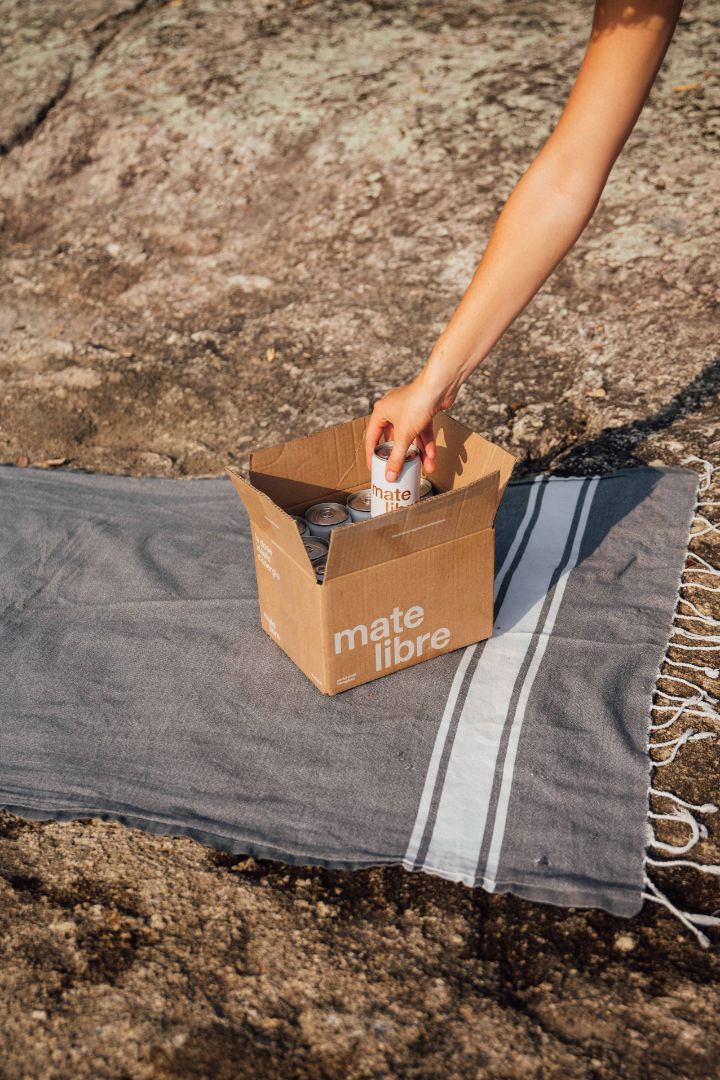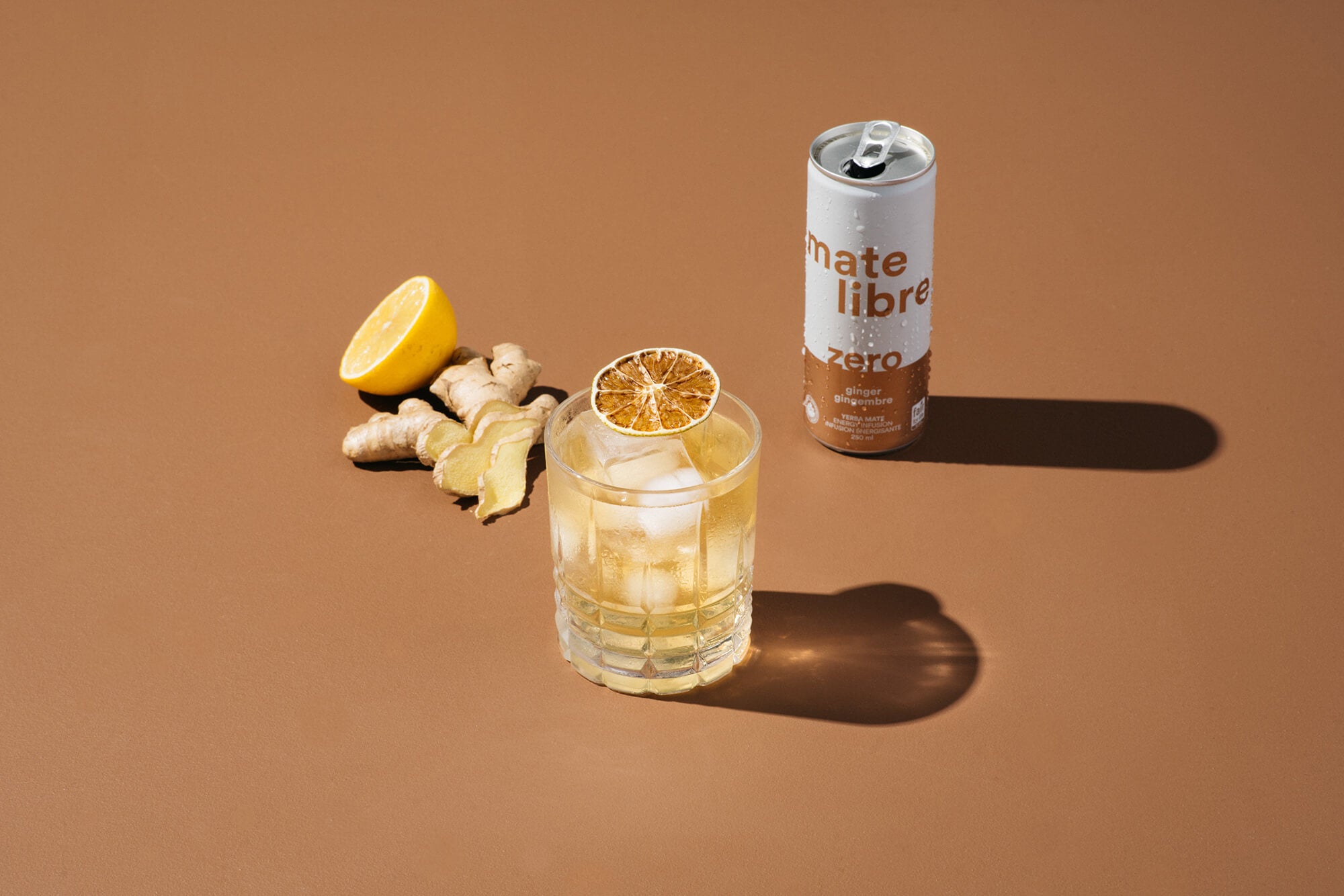
Should you be drinking smoked yerba mate or air-dried yerba mate?
Surprisingly, there are some serious differences between the two – from the taste to the effects on individual health and the environment.
Here at Mate Libre, we're proud to say we only use air-dried yerba mate for all of our products!
Why?
Keep reading to find out!
What is the difference between smoked and unsmoked yerba mate?
All yerba mate drinks share the same beginnings: they start out as humble yerba mate plants (also called Ilex paraguariensis) growing in South America.
Farmers cultivate these plants and harvest the leaves and stems to make delicious yerba mate teas, which are known to have a wide range of health benefits.
Yerba mate has become quite popular in recent years, especially in Canada and the United States. But this growth in popularity has also generated a wave of confusion about smoked vs unsmoked/air-dried yerba mate.
So, what's the big deal with smoked yerba, anyway?
The main difference between smoked and unsmoked yerba mate comes down to the processing of the plants.
When the yerba mate plant is harvested from the fields in which it is grown, the leaves and stems are placed in large containers and dried over a series of hours/days. This drying process is carried out in order to achieve the optimal level of moisture before being able to turn the plants into tea. The two main ways of drying these leaves are smoking and air-drying.
Smoked yerba mate
With smoked yerba mate, the plant's leaves and stems are dried in a large tumbler called a sapecado. A wood fire generates heat and smoke, which are blown over the plants with a fan. This is faster than air-drying yerba mate and contributes to a different flavor once the plant is eventually turned into tea.
Unsmoked yerba mate
Unsmoked yerba mate – also referred to as air-dried yerba mate – takes longer to process, and tends to have a milder taste compared to smoked yerba mate. With air-dried yerba mate, no smoke comes into contact with the plant's leaves and stems, and so this type of processing is said to be healthier.
What happens when you smoke yerba mate?
So, why does it matter whether the yerba mate tea you drink has been smoked or air-dried?
Here are a few of the main differences.
Differences in flavor
The difference in flavor might be the most obvious difference between smoked and air-dried yerba mate.
With smoked yerba mate, the tea takes on some of the flavor from the smoke, which can result in a richer taste.
However, that doesn't mean that air-dried yerba mate isn't flavourful. On the contrary, air-dried yerba mate is very tasty – it just doesn't have the same smoky taste that smoked yerba mate is known for.
Adverse effects on health
Flavor aside, there are some potential adverse health effects associated with consuming smoked yerba mate teas.
Because the process of smoking yerba mate uses burning wood, it is possible that some carcinogenic contaminants from the smoke find their way into the plant's leaves and stems, which in turn find their way into the tea that you drink.
While there is not yet any definitive research connecting smoked yerba mate drinks to carcinogens, it has been suggested that drinking smoked yerba mate tea may be associated with an increased risk of esophageal cancer.
These risks are in part due to the presence of PAH – or polycyclic aromatic hydrocarbons – and the effects it has on the human body. PAH is a known carcinogen, which is also found in some grilled meats and tobacco smoke. Exposure to PAH over time has been shown to adversely affect the immune system, the reproductive system, and the neurological system in humans.
Adverse effects on the environment
On top of potential adverse effects on your health, the process of smoking yerba mate plants can be harmful to the environment.
The smoke produced from burning wood releases a wide range of harmful pollutants, which can have terrible effects on the environment – including contributing to smog and even acid rain. Additionally, burning wood can also produce many potentially carcinogenic compounds, which can be incredibly harmful to both human and non-human life.
Wood burning has been identified as one of the more clear and avoidable contributors to climate change. That said, it's important to realize that smoke-dried yerba is not the only way to dry this amazing plant and turn it into tea.
What can you do about this?
Switching to unsmoked yerba mate (i.e., air-dried) is one way that you keep both yourself and the planet healthy and happy.
Is the yerba mate used in Mate Libre products air-dried?
At Mate Libre, we only ever use air-dried/unsmoked yerba mate for our products.
Why?
First, it's important to us that you, the consumer, enjoy the wide range of health benefits from yerba mate without having to deal with any of the adverse health effects that come from consuming smoked yerba mate.
Second, it's also important to us that we leave a positive mark on the environment through our work. The last thing we want to do is harm the environment and contribute to harmful climate change through our products.
Our commitment to the planet
Besides only using air-dried yerba mate for our delicious Mate Libre drinks, all our products are 100% certified organic and 100% fair trade. More than that, we are proud to say that we have produced zero carbon emissions on all of our drink shipments in the greater Montreal area for more than 2 years.
Yerba mate comes from the earth – so why shouldn't we do everything we can to make sure the earth stays healthy?
Check out our delicious range of Mate Libre yerba mate drinks today – you'll feel alert, energized, and you'll know that you're doing your body and the environment a favour by choosing Mate Libre!




